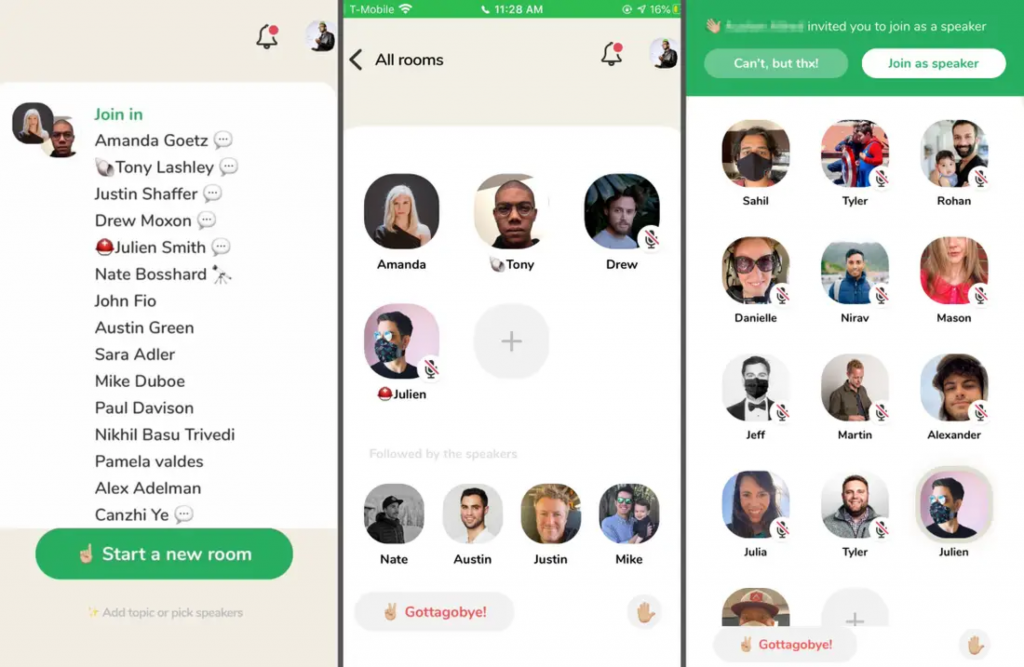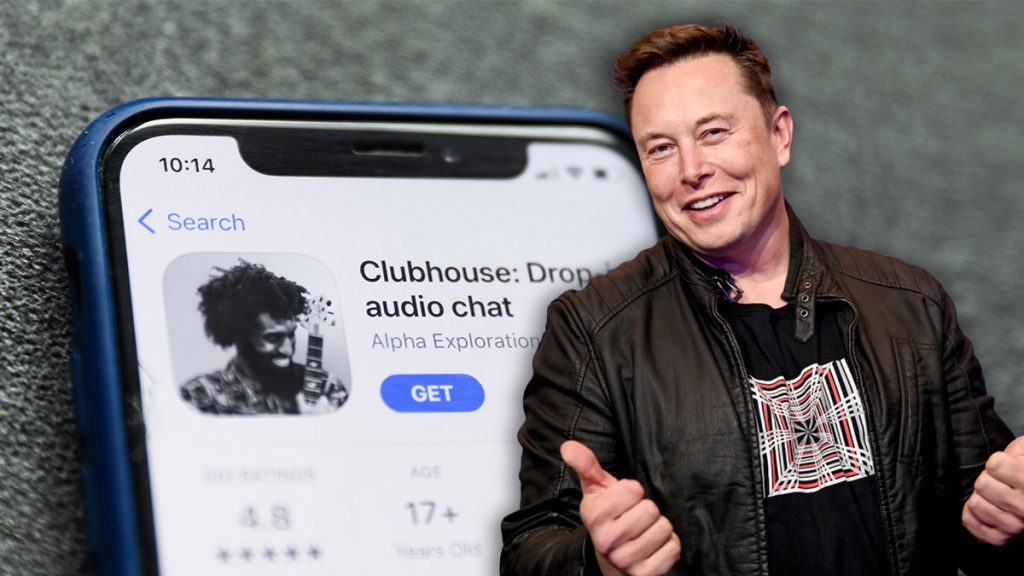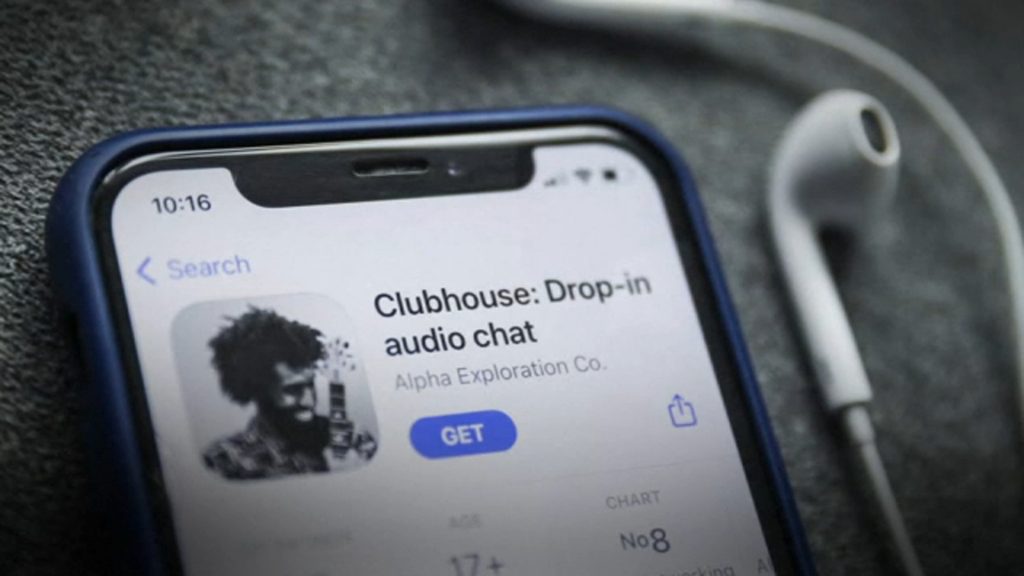Have you heard about Clubhouse? Of course, you have – it’s everywhere! Since the beginning of 2021, the voice-based social network has been gaining traction. In just six days at the end of January, 1.1 million people joined, even though access is granted by invitation only. Now, instead of just coming from friends, invites are even being sold on eBay and Alibaba.
The origin of Clubhouse
Clubhouse is still a baby; it’s not even a year old. It was launched in April 2020 by two Stanford graduates and former Google developers, Paul Davison and Rohan Seth. Davison already had significant experience creating social networks. In 2012, he launched an app called Highlight, which scanned users nearby and showed what they had in common; to do this, the program analyzed connected Facebook profiles. The solution was widely criticized for violating privacy and was closed in 2015.

After the shutdown, Davison switched to another project, Shorts. The idea of this network was to give other users access to your media library with all the photos and videos on their smartphone. It was similar to Instagram, but more daring way: Shorts didn't show only the best of your photos; it showed all of them, the whole plethora of elevator selfies and pictures of your dog. That idea didn't take off either, and Davison went to work at Pinterest.
Seth was more successful in running his business, Memry Labs, a mobile app and social network development studio that he launched in 2014, was sold to the online real estate company OpenDoor.
So, what is Clubhouse about?
When developing Clubhouse, the founders decided to rely on live communication. The social network consists of "rooms" and "clubs" where you can interact only by voice and only in real time. Recording talks is not allowed.
Any registered Clubhouse user can create a public "room" to discuss a specific topic. All of his or her subscribers will then receive an invitation to join the conversation. Then, the subscribers of those who have joined the meeting get the opportunity to receive a similar offer and so on. It’s like a chain reaction. Thus, interesting rooms can grow quite large.

All people are divided into speakers and listeners, but everyone still has the opportunity to "raise a hand" and become a speaker, to ask a question, or to make a proposition. Once a user has organized discussions in the "rooms" three times, he or she can create a "club", but its registration requires the approval of the Clubhouse moderators. All "rooms" can be public, private, or available only to members of a certain "club.”
Users can find relevant "rooms" through an in-app search or by scrolling through their feed, which is formed according to the list of interests specified during sign up. Each "room" can contain up to 5,000 people.
Despite the fact that Clubhouse is now invite-only and is available only for iOS, its weekly audience reached 2 million active users by the end of January. The total number of registrations was even higher. In just six days at the end of January, 1.1 million users joined the network.
Where does the hype come from?
There’s only one force in the world that can skyrocket things immediately: Elon Musk’s Twitter (yeah, yeah, Doge forever…). After he announced his appearance at Clubhouse, the excitement around the conversation with him attracted thousands of users. You can find the discussion on YouTube (even though recording is technically forbidden by the rules of the service, an exception was made because the "room" for 5,000 people simply could not accommodate all those who wanted to listen to his speech).

A week after Musk, Mark Zuckerberg spoke at Clubhouse. After that, celebrities like Oprah Winfrey, Jared Leto, Drake, and others began to join Clubhouse en masse.
As a result, this startup, which is not making any money at all, has already been valued at one billion dollars and raised $100 million from venture capital fund Andreessen Horowitz.
However, our topic today is not about how Clubhouse raises money but about how we can use it to fuel our business. Good question, Right? So, let’s dive deeper into the opportunities it provides.
How to use Clubhouse to promote your business
It’s worth saying that the platform’s potential has not been fully realized yet. The developers will be adding more monetization and marketing opportunities as they grow their product. Even now, though, there are a lot of success stories on the Internet that we can learn from.
1. Get in early
Being a first mover, you have the chance to taste all of the opportunities a platform provides. Later, as more and more people join this network, it will be much harder to gain traction or reach the people you need. Another good thing is that the people who are “hanging out” with you now are those we call “early adopters.” Such people hunger for everything new and are more likely to try your product. So, if you want to try Clubhouse, don’t hesitate too long.
2. Be useful
Simply by providing valuable advice, whether you are a speaker or someone who simply raised a hand, you can develop very fruitful connections. Share your expertise with the audience, spend some time answering questions, or even organize a specialized Q&A session, and you may leave a “room” with a few real-live clients at your side
3. Pay special attention to your bio
Since the whole network is voice-only, personal pages are the only space you can include a link to or text about your business without literally talking about it. In other words, this is the only SEO you have. So, be clear when explaining who you are and what you do. This will help a lot.
4. Leverage word-of-mouth
The difference between large and small networks is like the difference between cities and villages. In small communities it’s much harder to go unnoticed; everyone knows everything about each other. So, try launching a word-of mouth campaign. If you produce something, offer free samples or give away free demo access to your product. If you do it the right way in the right place, you’ll notice that very soon everyone will be talking about your solution.
Bonus: What you can learn from Clubhouse

Such skyrocketing growth does not come out of nowhere. It is the result of a wise and well-planned and executed marketing strategy. Some of the techniques used by Clubhouse can be successfully applied in other businesses as well.
1. Start niche
Everyone hates voice messages—except for those who actually use them. This group of people is large enough to be meaningful but still small enough not to be mainstream. And, of course, they have specific needs and wishes. Creating a product tailored to a specific audience will help you grow a big enough client base to fuel your future growth. Later, you may consider adding more functions to cover a wider audience. (Funny thing: there's a chance that Clubhouse may allow text messages as they grow even bigger. What do you think? Will they?)
2. Offer limited access
The invitation-only concept is not new, but it still works as smoothly as well-written code. People are attracted by exclusiveness. Getting access to a closed community makes them feel like they are “the chosen ones.” They will shout about it from the housetops. (Exception: Fight Club)
3. Mind the influencers
Let’s face it, Clubhouse’s star wouldn’t be shining that bright without the support of other stars. This doesn’t necessarily have to be Elon Musk or Mark Zuckerberg. It could be someone who has influence in your target community (a leader of a local hub, a blogger, etc.) Your task is to turn these people into your supporters. Of course, many of these promotions will be paid (it’s up to you to decide whether you can afford it or not), but some of them may simply like your product and recommend it gratuitously.
Check out a related article:
5 Ways to Market Your Startup Before You Launch It
***
Wooh! It’s quite an exciting task to dig into brand-new instruments, isn’t it? What about you? Are you in the club already? Maybe you even have an experience worth a case study? Feel free to share it in the comments section. That will make a great addition to the article.
In the meantime, we’ll be keeping track of similar events and sharing interesting news with you. Subscribe to our newsletter not to miss anything.

Leave a Comment